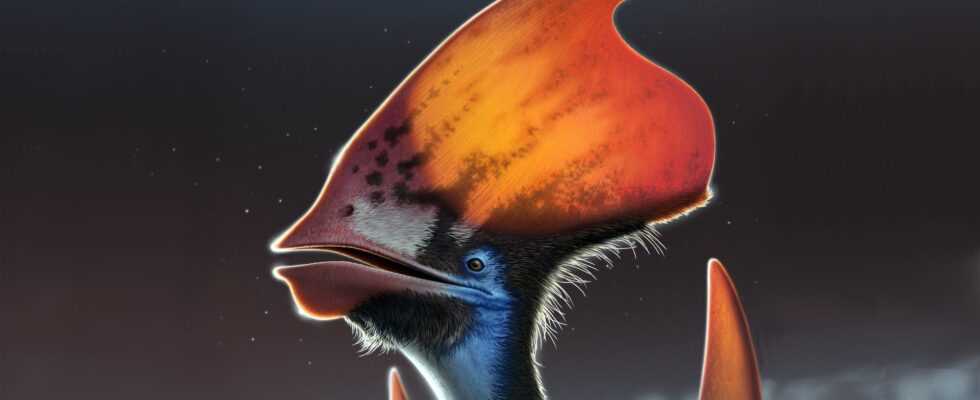The pterosaur Tupandactylus imperator wore a feather headdress on his crest, which was probably colored. The discovery supports the assumption that feathers originally had a signaling function. Experts led by Aude Cincotta from University College Cork in Ireland identified the fine structures on a 115-million-year-old fossil of the pterosaur found in Brazil. As the team reports in Nature, the discovered feathers contain differently shaped pigment granules. In modern birds, the shape of these melanosomes is related to their color. According to a press release from University College Cork, this shows that color was important for the function of the plumage from an early age.
While it’s been known for years that dinosaurs wore feathers, it’s still unclear whether their closely related pterosaurs also had feathers. To fly, they used membrane wings, each stretched between an extended finger and the side of the body. However, their bodies were covered in a kind of fur made of filaments, which some experts have identified as simple feathers – but this is debatable. The at Tupandactylus imperator However, the structures identified are regularly branched and in this respect resemble the feathers of modern birds, so that they are in fact comparable structures with some certainty.
The pterosaur had a wingspan of about five meters and, above all, one for the genus Tupandactylus typical head crest. Experts believe that this crest, adorned with colored dots and patterns on some well-preserved fossils, served a signaling function.
Similar to antlers or feathers in animals living today, they may have played a role in mating behavior. The feathers found by Cincotta’s team covered the back of the head crest up to the nape of the neck. Therefore, experts assume that they contributed to the signaling function. The simpler filament feathers that covered the animal’s body arguably insulated the animal from the cold.
